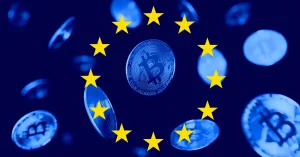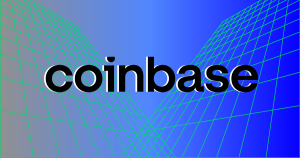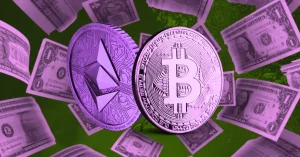Top 5 Crypto Trends in 2021

It’s safe to say that 2021 was a particularly explosive year for the entire cryptocurrency market. It was also one where particularly strong narratives were centered around different segments – a year full of plot changes and various metagames.
With this said, as we approach the last hours of the year, we’ve taken the liberty to cherrypick five of the most influential trends during the past 12 months. The below come in no particular ranking as all of them excelled in specific areas.
So, without further ado, let’s dive in.
Memecoins
Although some might argue that memecoins came to prominence in 2020 during the so-called DeFi summer, they objectively took the center stage in 2021 – on a few occasions.
Unlike other trends, though, memecoins were seemingly propelled by a central authority – so to speak. Elon Musk, the CEO of Tesla, as well as TIME Magazine’s Person of the Year, singlehandedly drove tremendous awareness towards what’s unanimously known as the king of memecoins – Dogecoin.
Dogecoin (DOGE) might have started out as a joke years ago but is now one of the world’s leading cryptocurrency projects with hundreds of thousands of HODLers and one of the strongest communities. What is more, with the apparent backing of Musk, DOGE will, at some point, be accepted by Tesla for some of its merchandise.
The cryptocurrency is up almost 4,000% at the time of this writing, even though it’s trading at 76% below its all-time high reached in May.
But what Dogecoin did was far more than just an increase in value. It inspired an entire movement of memecoins, a lot of which came with alarmingly similar functionalities that flooded the market in the months to come.
One of the most vivid examples is Shiba Inu’s SHIB token. The self-proclaimed “Dogecoin killer” is one of the best-performing cryptocurrencies of the year, with multiple stories of people investing as little as $100 a year ago and becoming multi-millionaires. Even though it’s 60% below its all-time high, right now, SHIB is up 44,636,200% up during the past 12 months alone.
What is more, memecoins became a household name as well as a viable market-placement strategy. The rise of Doge and Shiba showed that there’s a clear product-market fit for coins named after popular dog breeds and many teams started exploring various avenues and creating what many consider to be legitimate business platforms.
If one thing is clear now, it’s that everyone takes memes unironically, ironically.
Non-Fungible Tokens (NFTs)
Non-fungible tokens have been at the forefront of the cryptocurrency industry for quite some time now. It’s also one of the trends that’s responsible for a whole lot of newcomers in the field.
One reason for it might be that the regular Joe doesn’t associate NFTs with complex economic models and attempts to disrupt monetary policies. For most people, NFTs are just verifiably scarce representations of digital art that are, well, fun.
Where else can you see a digital drawing that can literally be right-click saved as a JPEG sell for $8 million?
Of course, it’s not that simple – NFTs carry the digital signature of the artist and can’t possibly be reproduced, making each one essentially entirely unique unless it’s been created in multitude upon generation.
Perhaps the most impactful story on the matter of NFTs is the astronomical sale of Beeple’s The First 5,000 Days. This is a conjunction of 5,000 pieces of digital art that Mike Winkelmann (a.k.a Beeple) had produced over 5,000 days. The piece sold for a whopping $69 million at a Christie’s auction and made him one of the three most valuable living artists.
From Crypto Punks, Rocks, Bored Apes Yacht Club, Rumble Kongs, and Hashmass to literal numbers written on white backgrounds, NFTs are all over the place. What is even more interesting is that this trend doesn’t seem to slow down at all. While it’s true that retail interest in NFTs has declined, it’s also important to note that these tokens are a cornerstone of our next mention – the metaverse and the play-to-earn model.
Play-to-Earn (P2E)
Blockchain and online gaming are two fields, touted to go hand-in-hand for quite some time. Throughout the past few years, we saw a few games that were underpinned by distributed ledger technology, but up until this point, nothing really took off.
Well, this all changed in 2021, and especially in late Q3 and Q4. It was no other than Axie Infinity that led the march throughout the year. One of its native tokens – AXS – increased from roughly around $0.5 and reached an all-time high of $160 in November. At the time of this writing, the token is up almost 17,000% in the past 12 months alone, despite trading well below its ATH. Moreover, a plot of land in Axie Infinity’s universe sold for $2.3 million not so long ago.
The entire P2E genre, though, took off after Facebook revealed that it would rebrand to Meta and become an active player in building the metaverse. Once that happened, it was on. The play-to-earn field took off and is still raging at the time of this writing.
Projects such as The Sandbox and Decentraland cracked well into the top 50, and the latter even surpassed Axie Infinity as the biggest gaming project.
Now, it seems that the concept of the metaverse is all around us, and the hype is real. Hundreds of teams are racing to produce a blue-chip blockchain game that would win the player base and become an established leader. Maybe 2022 will see that happening, who knows?
Binance Smart Chain Mania
If last year we saw the DeFi summer on Ethereum, then this year we saw the same madness unravel on the Binance Smart Chain (BSC).
The demand for decentralized apps became so high that it literally clogged the Ethereum network. User-intensive processes increased the load to an extent where people had to pay hundreds of dollars in transaction fees, making it virtually impossible for smaller investors to participate in the field of decentralized finance (DeFi).
As the yield farming metagame was growing in popularity, though, alternatives started to pop up in aims of grabbing all those frustrated DeFi degens that were tired of paying big bucks on Ethereum.
This is how the Binance Smart Chain came to prominence. In the second week of February, the unique addresses on BSC tripled. In March, the count of transactions on PancakeSwap (the largest DEX on BSC) was higher than that on the entire Ethereum network for a span of a 24-hour period.
In April, the total value locked in PancakeSwap reached $5.5 billion, temporarily surpassing the TVL in Uniswap.
All the projects that we saw being built on Ethereum were suddenly replicated by other teams on BSC, but, as history would go on to show, it was to no avail. The broad majority of them are currently way underwater as the hype around BSC slowly faded away. Even though the unique address count continues to grow, it’s nowhere near the temp it had back in that period.
It’s also worth mentioning that this entire trend is part of the reasons why Binance Coin (BNB) is up over 1200% in the past 12 months as well.
Laser Eyes: Bitcoin to $100K
Laser eyes are a Bitcoin-centered trend that also saw a lot of hype throughout the year. Basically, someone came up with the idea to put laser eyes on their Twitter profile picture and keep it that way until BTC’s price reaches $100,000.
A massive number of people, including MicroStrategy’s CEO Michael Saylor, US Senator Cynthia Lummis, and even our own potato, succumbed to the idea and thus participated in what appeared to be one of the biggest movements of the year.
To this date, Michael Saylor has his Twitter profile picture carrying laser eyes, causing many to believe that he’s executing the highest conviction trade on Wall Street.
In any case, the trend was somewhat short-lived because soon after it started, the price of bitcoin crashed by roughly 50%, causing some to speculate that this particular hype was somewhat of a top signal.
Binance Free $100 (Exclusive): Use this link to register and receive $100 free and 10% off fees on Binance Futures first month (terms).
PrimeXBT Special Offer: Use this link to register & enter POTATO50 code to get 25% off trading fees.














